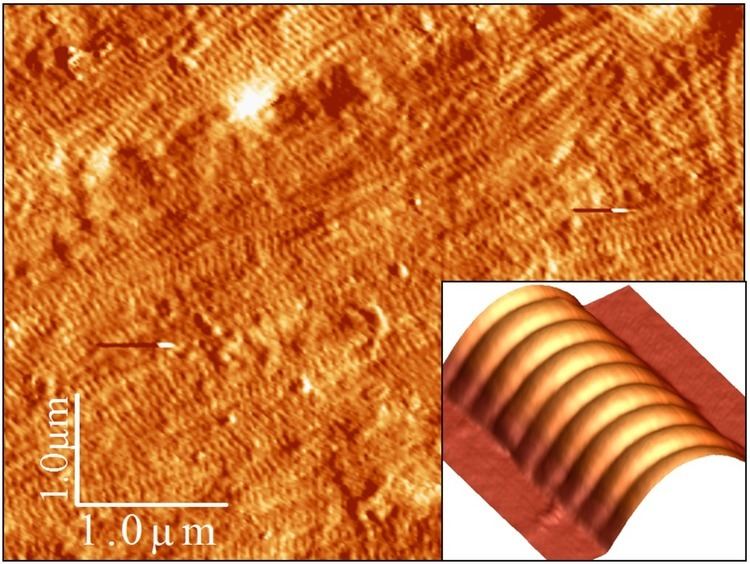 | ||
Nanobiomechanics (also bionanomechanics) is an emerging field in nanoscience and biomechanics that combines the powerful tools of nanomechanics to explore fundamental science of biomaterials and biomechanics.
Contents
Since the introduction by its founder Yuan-Cheng Fung, the field of biomechanics has become one of the branches of mechanics and bioscience. For many years, biomechanics has examined tissue. Through advancements in nanoscience, the scale of the forces that could be measured and also the scale of observation of biomaterials was reduced to "nano" and "pico" level. Consequently, it became possible to measure the mechanical properties of biological materials at nanoscale.
Most of the biological materials have different hierarchical levels, and the smallest ones refer to the nanoscale. For example, bone has up to seven levels of biological organization, and the smallest level, i.e., single collagen fibril and hydroxylapatite minerals have dimensions well below 100 nm. Therefore, being able to probe properties at this small scales provides a great opportunity for better understanding the fundamental properties of these materials. For example, measurements have shown that nanomechanical heterogeneity exists even within single collagen fibrils as small as 100 nm.
One of the other most relevant topics in this field is measurement of tiny forces on living cells to recognize changes caused by different diseases. For example, it has been shown that red blood cells infected by malaria are 10 times stiffer than normal cells. Likewise, it has been shown that cancer cells are 70 percent softer than normal cells. Early signs of aging cartilage and osteoarthritis has been shown by looking at the changes in the tissue at the nanoscale.
Methods and instrumentation
The common methods in nanobiomechanics are summarized below:
Examples of relevant materials
Computational nanobiomechanics
In addition to experimental aspect, research has been expanding through computational methods. Molecular dynamics (MD) simulations have provided a wealth of knowledge in this area. Although, the MD simulation are still limited to a small number of atoms and molecules, due to limitation in the computational performance, they have proved to be an instrumental branch of this emerging field.
